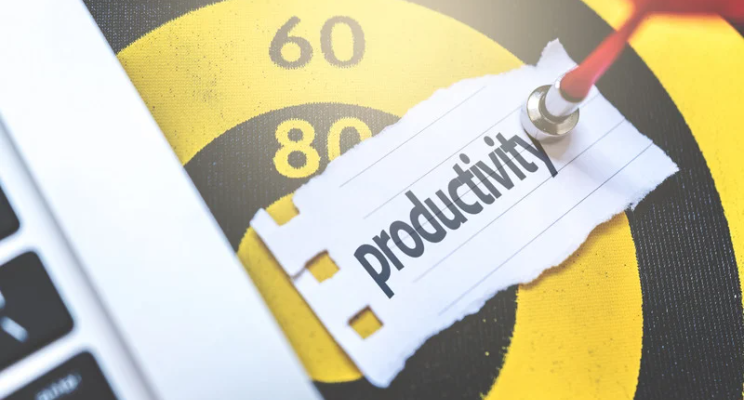While on the phone with a colleague recently, she said, “I don’t get how you can be so freakishly productive.”
“Freakishly?”
That put me off a bit until she followed up with “You get more done in a week than most people I know do in twice that time.”
Buttering up helped. 😉
Then she said, “Seriously, can you walk me through your process?”
I did and thought it may be helpful information for you.
First, I’m an odd mixture of impatient and a recovering perfectionist. It can be frustrating.
I want things done, done quickly and done perfectly. It’s an impossible combination and so I strive for excellence with a healthy dose of “good is good enough as long as ‘good’ is not bad”.
The age-old question. . .Would I be okay with my name on it in front of everyone I’ve ever known and loved. Would I be proud?
If “yes”, time to quiet the perfectionist voice and release the thing.
If “no”, back to work.
Second are boundaries. I have strong boundaries, except when I don’t (make sense?).
For example, if I’m writing or doing any “Deep Work”, I turn off my wi-fi, shut down my phone, etc. as a way to support me in my efforts since I know I’d pick up the phone or answer that only takes a “got a quick second” for me to go from inspired, creative writing to frustrated “trying to get back into the right mindset” where it’s better for me to switch tasks altogether.
Third, I know my goals and how each of my daily activities contributes (or doesn’t) to the accomplishment of each goal. If I can’t track an activity to a goal, there needs to be an ROI that makes sense. I begin each day writing this year’s goals – it helps to keep me focused.
Fourth, each day before shutting down the office, I list my priorities for the next day – not just “list”, but go into a sentence or two of detail about what I want to accomplish for the day.
It’s a practice I first learned about from Dan Kennedy. Result? While I’m making dinner, going about my evening, sleeping, etc., my subconscious is already at work on those items.
Fifth, at least weekly (more if I feel the need), I “clear my mental desk” (“brain dump”) of everything I need to do/attend to.
After I create this list (I use a Whitelines grid notebook and just keep adding and put a smiley face next to completed items), I assign best guesses on how long something will take and, pull a few of the 10-15-minute items for each daily list so I can knock things out during those unplanned pockets of time.
Sixth, I take time off in a way that suits me, not “old employee” ways.
For example, I enjoy working early on Saturday or Sunday mornings. So I do. Long ago in Corporate life, I started taking Wednesdays off and realized that I like that midweek break, so now I typically take a few hours/half-day off on Wednesdays.
As part of this, I group my activities (I’ve mentioned this on calls before). Mondays: Writing, Marketing, Deck Prep; Tuesdays and Thursdays: Client and Community Training Sessions; Wednesdays are a smorgasbord of whatever’s needed – often client project work, client half- and full-day sessions and Fridays are for finances, follow-up and finishing whatever didn’t happen during the week and weekends are for whatever (if anything) I feel inspired to play with.
Seventh, my team.
They’re amazing and we connect most often through Trello. I post tasks with details and deadlines there and they can comment, attach docs, etc. We can re-use checklists created for recurring tasks and so much more. It’s intuitive and totally customizable which is why I adore it so much. Plus when I can easily search on anything needed.
Eighth, I do my best to learn from my experiences. If something doesn’t work, I try something else and am not afraid (most of the time!) to fail.
Long ago, I started a “Success Notebook” – in hardcopy and in a folder in my email. The Success Notebook includes things I’ve succeeded at, “thank you’s” received, tokens of “big wins” over the years (letter from former President Clinton thanking me for a project, slip of adding machine tape after solving an issue with the Federal budget when others couldn’t, a dollar bill symbolic of when my biz broke $100,000 and a screenshot from my old Constant Contact account showing a list size of 82 people when it happened, my first 5K “runner’s bib” from the first race I completed. . .).
The purpose of this Notebook is to remind me that yes, I may fail. . .of course, I may succeed as well and that fear of failure is no reason not to try. Over the years I’ve failed many things and survived all of them and, fear, especially of failure, is something we can reframe.
Rather than fear “failure”, view the “failure” as acknowledgement of one way that didn’t work and change the “fear” to be a fear of standing still or a fear of not trying or a fear of being in exactly the same place you were last week, month, etc.
It’s my hope that this list is helpful to you in achieving your goals.
